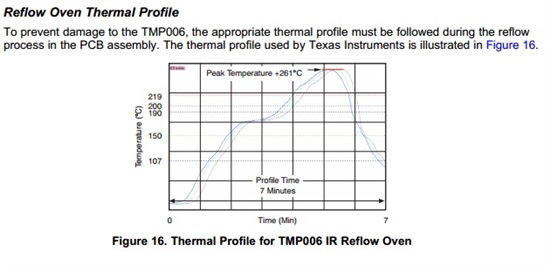Hi,
I have used hot gun to mount 6 TMP006 chips on my new boards. The hot gun is Steinel 3483. It was set to 310 degree. Solder flux was applied before soldering. The flux type is Alpha NR-205. The flux was cleaned by ultrasonic cleaner later.
Afterwards, I tested TMP006 in the lab. I confirmed serial bus firstly. The device ID (register FFh) always returned 0x0067, which was right. One of 6 TMP006 chips returned 0x6D94 (register 01h). The value meant 219.16 degree of ambient physical temperature. It seemed extremely high. It was impossible in the lab. What was problem?
BRs,
Luo


